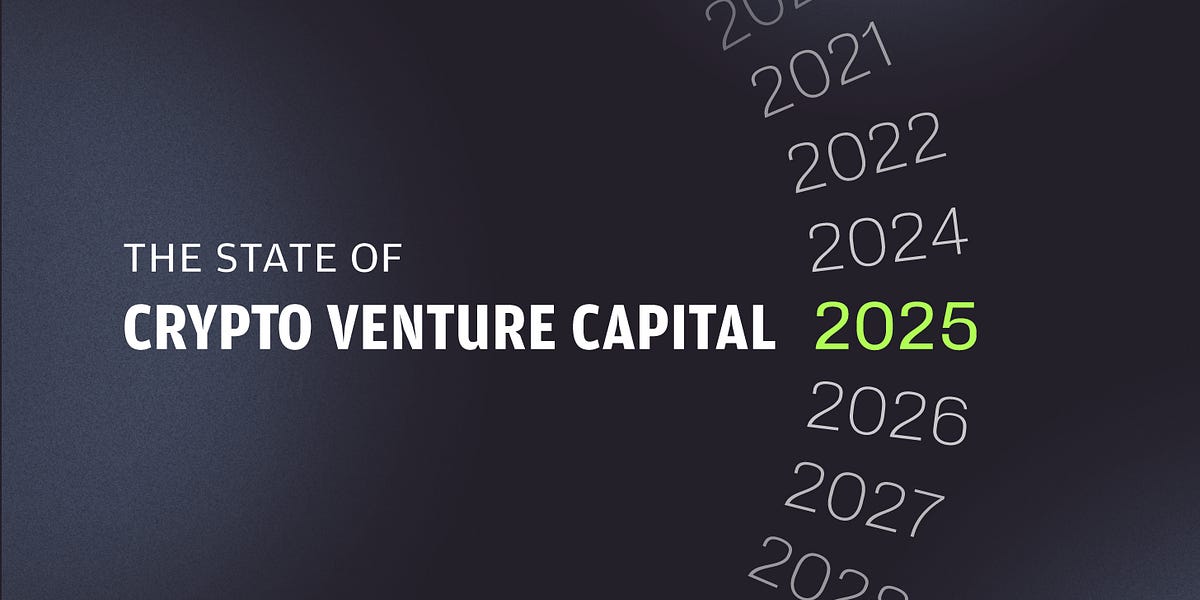- Web3 Investor Briefing by w3.group
- Posts
- Web3 Investor Briefing | September 2025
Web3 Investor Briefing | September 2025
Every month we provide you with insightful deep-dives into the world of Web3 investing.
Welcome to this month's investor briefing featuring our latest analysis, findings and strategic insights from the Web3 ecosystem.
TL;DR
Julius from w3.wave discusses macro, institutional demand for crypto, and rise of prediction markets beyond crypto-native speculation.
Henrik from w3.ventures takes a fresh look on stablecoins, their adoption in numbers, new use cases and reflects on the hottest upcoming infrastructure.
Tom from w3.labs discusses recent statements by Jan van Eck and Joe Lubin, that Ethereum is the Wall Street token.


First of all, we are excited to invite you to the Investor Round Table – a moderated online exchange on crypto markets as a new asset class, with a focus on staking, liquid investments, venture capital, institutional adoption, and yield. Sign-up now and don’t miss the event over the link below
Macro is back on the menu
After a summer stretch where investors largely focused on market momentum, macroeconomic developments have returned to center stage. The appetizer was Jerome Powell’s widely anticipated address at the annual Jackson Hole Symposium. With inflation prints proving “stickier” than the Fed’s 2% target, expectations were that Powell might lean hawkish, signaling rates would remain higher for longer and potentially pushing the anticipated September cuts further out.
To the surprise of many, Powell struck a distinctly dovish tone. He noted that, in his view, the risks of a weakening labor market now outweigh the risks of persistent inflation. In plain terms, Powell signaled that the Fed is prepared to loosen its restrictive stance sooner than markets had feared.
This pivot immediately shifted attention toward the next datapoint: labor market health. Non-farm payroll numbers disappointed, coming in below expectations. More importantly, previous months’ data was revised sharply downward, painting a picture of an economy losing momentum rather than accelerating. With the Fed explicitly acknowledging labor risks, the weakness in jobs data reinforced the case for a September rate cut.
The market now views a 25bp cut at the upcoming FOMC meeting as nearly certain, with futures pricing showing odds close to 95%. But the real focus is no longer the cut itself - it’s what Powell says beyond it. Will this be presented as the start of a sustained easing cycle, or simply a one-off move with further adjustments contingent on data? With U.S. equities and gold at all-time highs heading into this meeting, expectations are already running hot. The Fed faces a delicate balancing act: providing relief without overstimulating already frothy markets.
What We’re Watching: Institutional Demand for Crypto
One of the defining features of this cycle is how different it looks compared to previous ones. Retail-driven speculation has played only a minor role so far. Instead, institutional demand has become the decisive force.
ETFs have attracted roughly $65bn of inflows, reshaping how traditional investors access crypto.

Digital asset treasury (DAT) companies now hold more than $90bn in net assets on their balance sheets.

These flows are the lifeblood of the current bull cycle. They ebb and flow, but without them, momentum cannot be sustained. This is why we monitor two key indicators so closely:
Trading volumes: High trading volumes are critical for treasury companies, as they allow new share issuance without materially impacting prices. In the second half of August, volumes declined significantly, creating a headwind for fresh inflows. For the cycle to regain momentum, we’ll need to see volumes break this downtrend as we move through September.
mNAVs (multiples on net asset value): Valuations have compressed across the sector. Most DATs are now trading close to, or even below, book value. Strategy (formerly MicroStrategy) remains the clear outlier, maintaining a ~1.3x premium. Compression toward book value is natural as the sector matures, but sustained discounts below 1.0x are a red flag. At that point, raising capital becomes more difficult, and treasuries are incentivized to buy back stock rather than accumulate new tokens — effectively reducing future inflows into crypto markets.
This dynamic illustrates how closely today’s crypto cycle is tied to institutional mechanisms. Monitoring ETF flows, treasury issuance, and mNAVs is no longer optional, it’s essential to understanding the market’s trajectory.
Prediction Markets: From Niche to Mainstream
Prediction markets have long intrigued us, offering a fascinating lens into collective intelligence and price discovery. We were early users of Polymarket and have followed the sector closely. The inflection point came during last year’s U.S. election, when prediction markets not only forecasted the outcome well in advance but also drew millions of new users, making headlines outside the crypto world.
Skeptics suggested this was a one-off bubble of election-driven speculation. Instead, prediction markets have matured significantly over the past year. Platforms like Polymarket and Kalshi are becoming more professionalized, offering:
Deeper liquidity pools that make markets harder to manipulate.
More accurate pricing, thanks to arbitrage opportunities across platforms.
AI-powered trading bots, enabling real-time efficiency and sharpening price discovery.
The result is that prediction markets are moving well beyond their original niche. They are starting to resemble an emerging financial primitive, one that bridges traditional speculation, information markets, and decentralized infrastructure. While this sector remains relatively small compared to DeFi or treasuries, its growth trajectory suggests it could play an increasingly meaningful role in the broader crypto economy.


Stablecoins and DeFi: real‑world usage is compounding
In April we outlined why stablecoins are becoming the new bridge for businesses and consumers, with cross‑border settlement, treasury, and programmable payouts as the first high‑ROI use cases. If you missed that you can catch up here:
Today, we are taking a fresh look at this fast-growing sector. We will examine the adoption numbers, explore new use cases, and investigate the hottest upcoming financial rails.
Real stablecoin adoption in numbers
Stablecoin activity continues to grow. In the last 30 days, retail transfers reached approximately 5.8 billion dollars, proving the usability and feasibility of real-world applications such as remittances and payments.
Also, the aggregate market cap of stablecoins is steadily increasing and reached 250 billion Dollars at the time of writing.
And, as the survey results below show, both small and large businesses are heavily considering the adoption of stablecoins. These plans are a direct result of increased efficiency, cost savings, and regulatory tailwinds, such as the GENIUS Act in the U.S. and the MiCA regulation in the E.U. To cater to this demand, payment giants are shipping products. For example, Visa launched stablecoin-linked cards in six Latin American countries with Bridge, enabling consumers to spend stablecoins at Visa merchants and integrate stablecoins into everyday commerce. Also, Fireblocks introduced a Network for Payments that connects issuers, PSPs, banks, and liquidity providers in over 100 countries and offers a neutral API layer across multiple rails and assets.
Programmable money fuels new use cases
While we already talked a lot about transfers, remittances, and treasuries in stablecoins, their programmability enables a wide range of new use cases.
The core concept is that stablecoins transform money from static digital dollars into "programmable money", essentially enabling dollars that can follow automated instructions and execute conditional logic through smart contracts.
One of the most significant use cases involves automated payment settlements that eliminate the costly delays inherent in traditional business payments. Most companies today operate on delayed payment models where invoices are sent today, processed tomorrow, and paid in 30 days. This antiquated system costs the economy $1.38 trillion in working capital loans at interest rates of 7-25%, with a significant portion of supply chain invoices running overdue.
The fight for the underlying infrastructure stack
What’s not clear yet is who will win the race for retail stablecoins: Tron previously had a large retail market share of stablecoins thanks to its cheap fees and adoption in Asia. However, it is losing market share rapidly. Currently, BNB Smart Chain is one of the winners, accounting for nearly 40 percent of retail activity.
Besides andIn a growing market like this, it’s logical that there are new contenders upcoming who want to catch up with the leaders. Here is an overview of the hottest ones:
Tempo (Stripe + Paradigm)
What it is: A payments‑first layer 1 optimized for stablecoin settlement at enterprise scale. Targets very high throughput with sub‑second finality and supports payment‑specific features like batch transfers.
Architecture and rollout: EVM compatible and in private testing with a curated validator set and plans to open up over time. Design partners include Visa, Deutsche Bank, Shopify, Nubank, OpenAI and Revolut.
Why it matters: Built for PSPs and large internet companies that need predictable, high‑scale settlement and payment‑native features.
Plasma (Bitfinex/Tether)
What it is: A stablecoin‑focused layer 1 aiming to deliver fast, low‑cost or fee‑free stablecoin transfers with EVM programmability. Positions itself as combining Bitcoin‑anchored security with its own finality mechanism and targeting remittances and merchant payments.
Funding and rollout: Reported token sale and venture rounds with a mainnet beta targeted for 2025, positioned as an EVM‑compatible sidechain for stablecoin flows.
Why it matters: Competes on end‑user UX for stablecoin payments. Key questions are sustainability of zero‑fee economics, validator incentives and the production security model.
Update on the DeFi mullet: consumer yield via fintech‑grade UX
If you're not used to it, crypto and DeFi can be tough. You have to manage wallets on different chains or protocols and make sure you don't lose your keys. Today, the average internet user isn't knowingly interacting with any servers or databases. Similarly (and finally), centralized platforms are integrating DeFi platforms and hiding the technical complexities from their users.

The winning pattern that emerged is a fintech front end with a DeFi back end. Users get a familiar, compliant interface. Under the hood, decentralized protocols provide transparent access to liquidity and DeFi yield. While we mentioned this already in our last newsletter edition, we are seeing more and more fintechs adopting this architecture.
Revolut is a prime example. The neo-bank that wants to be an all-in-one financial app, aim to serve as your bank account and platform through which you can earn interest, invest in stocks, cryptocurrency, and other financial products. Recently, news came out that they selected Morpho to power a DeFi yield product on the Revolut app. Morpho is a lending product offering customizable integrations into other platforms, enabling customers to earn yield through their preferred user interface and existing accounts. By doing so, it picks up the user where they are and where their Fiat sits, eliminating many of the steps that would normally be required to deposit into a DeFi protocol. Revolut isn't the only example; Bitpanda and Crypto.com's Earn programs are based on this architecture as well.
How it works
Customers in the integrated app can easily deposit their USDC into a Morpho vault using the interface they are already familar with. Experienced DeFi professionals like Gauntlet create Morpho Vaults. Vaults are essentially yield engines designed for different assets and risk profiles.
Depending on the vault settings, the asset will be supplied to Morpho markets, where users can borrow them.
Vaults are earning yield from borrowers, enabling depositors to profit.

Integrating these type of procducts gives users access to:
Curated Risk Profiles: Unlike traditional lending platforms where users are exposed to all assets in the pool, Morpho Vaults allow selective exposure to specific collateral types based on risk preferences.
Permissionless Infrastructure: Any entity (individual, DAO, protocol) can create and manage vaults with different risk parameters and allocation strategies.
Non-Custodial Architecture: All positions remain fully controlled by the user with transparent on-chain verification of allocations and immutable vault logic.
For mainstream earn products the way forward is clear: Disclosures should be simple. Asset selection should be conservative. The best experiences will feel like a checking account with transparent yield rather than a protocol dashboard.

Ethereum is the Wall Street token
Jan van Eck said it on air and it captured the moment: “Ethereum is the Wall Street token.” His point is pragmatic. As stablecoins move into everyday banking, institutions will have to choose a blockchain for intake, settlement, and reconciliation. He believes the default answer inside banks and broker‑dealers is Ethereum.
“Ethereum is the Wall Street token,” says @JanvanEck3.
— VanEck (@vaneck_us)
8:57 PM • Aug 27, 2025
Joseph Lubin pushes the idea to its logical end state. He argues that finance runs on trust, and that Ethereum turns trust into software that anyone can verify and no single party controls. As more agreements, payments, and processes become code, the economy will prefer neutral trustware over siloed systems. ETH is the native resource that powers and secures this system. You pay for blockspace in ETH, you secure the network by staking ETH, and you can use ETH as programmable collateral. That is why he says it is hard to be “bullish enough” once you think in system terms. In his words, ETH is a powerful “decentralized trust commodity” that benefits as the world moves to decentralized rails.
I am 100% aligned with almost all of what Tom @fundstrat says here.
Yes, Wall Street will stake because they currently pay for their infrastructure and Ethereum will replace much of the many siloed stacks they operate on (e.g. JPMorgam probably operates on several siloed stacks
— Joseph Lubin (@ethereumJoseph)
3:02 PM • Aug 30, 2025
These two messages fit together. VanEck gives the near‑term pull. Stablecoin traffic is growing and banks must pick a chain to support it. The gravitational center is Ethereum because of developer mindshare, tooling, and liquidity. The long-term pull is the neutral trustware that only Ethereum offers. If more of finance becomes software, the economy wants neutral trust at the base layer and Ethereum is designed for that role.
How does this fit with the share of retail transactions we discussed in the w3.ventures section above? Although retail prefers other chains for transactions, Ethereum still ranks first in transaction volume and has even increased its share in recent months.
This could be an indication that we will see other chains (think Tempo and the likes) emerge as the payment processors, while Ethereum will be the place of settlement. There is also a potential future reality, where more centralized chains are losing relevance, or as Maja Vujinovic puts it:
"Corporate chains are AOL in 1995: fast, distribution-heavy, but walled gardens. Ethereum is TCP/IP: messy, neutral, unstoppable. One’s a toll road. The other is becoming a highway system for global finance"













